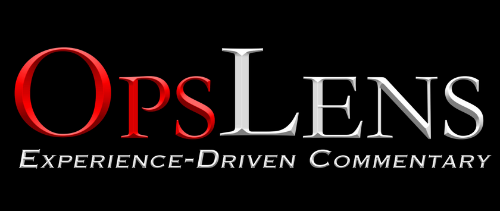Crossfit emerged in the late 2000s as a paradigm shift for the fitness world. The focus began to change from just looking good to actual performance. Functional fitness has become a true phenomenon and has radically changed the way many of us workout. This change has been felt most strongly in the military, and in police and fire departments around the country. There is no job that relies more on functional fitness and elite athletic performance than that of a police officer, firefighter, solider, sailor, airman, or marine. The fact that Crossfit was adopted early on by the special operations community only further enhanced the emergence of many new companies started specifically to cater this type of fitness to military personnel and first responders.
As a scout serving in the 1st Cavalry Division during Operation Iraqi Freedom, I was in a platoon that took physical fitness very seriously. When we returned from Iraq in 2009, we adopted Crossfit as our new program for PT every morning and my life was changed. I had worked out with weights before, trying to get as big as I could, and I ran during PT before our deployment because I had to. However, I had never seen a fitness program combine the different aspects of strength and conditioning the way Crossfit did. I was exposed to high intensity, circuit-style workouts with large numbers of repetitions of bodyweight exercises like push-ups, sit-ups and squats. I did burpees for the first time and began a love-hate relationship with them that continues to this day. I got really good at pull-ups. The best thing to come from this was that my PT scores began to skyrocket. In fact, PT scores went up for almost everyone in my platoon, despite the fact that we had just come back from almost fifteen months in Iraq.
The relationship between Crossfit and the military goes back to the 2000s, when Crossfit was adopted by many Green Berets, Navy SEALs, Pararescuemen and others serving in the special operations community. Since then, hundreds of hero workouts named after fallen military personnel, police officers, and firefighters have been posted on Crossfit’s website. Now, new fitness programs with a similar emphasis have begun to emerge and their focus is on providing service members and first responders with the physical edge they need to succeed in their dangerous and physically-demanding careers.
Soflete was started by current and former special operations forces personnel who are accomplished fitness experts. They provide workout programs that have been developed to build athletic capacity conducive to operating in harsh and punishing conditions, such as combat to military personnel, special operations candidates, and anyone else interested. Workouts focus on a combination of strength and stamina and anyone familiar with Crossfit would recognize many of the exercises.
5-5-5 Fitness focuses on providing similar fitness programs to firefighters, emergency medical technicians, and paramedics. Firefighting is an arduous and physically-demanding job that typically requires high fitness standards to get hired. Unfortunately, as many progress through their careers, fitness performance drops as the same standards are often not required to be met beyond the academy. 5-5-5 Fitness aims to change this by encouraging healthy lifestyles for fire personnel and by providing workouts and fitness programs that focus on strength, conditioning, and functional fitness.
As obesity levels continue to climb and fitness receives more attention from decision makers, the question to ask is, can fitness programs like Soflete and 5-5-5 Fitness improve the health and fitness of military, police, and fire personnel? Perhaps the military branches and police and fire departments will begin to embrace this new style of functional fitness. There is no shortage of qualified trainers, coaches, entrepreneurs, along with active and former military, police, and fire personnel who are willing and able to lead the change towards making healthier and fitter service members and first responders.
Christopher Castellano is an OpsLens Contributor and U.S. Army Veteran. He currently serves as a firefighter in New York City.
To contact or book OpsLens contributors on your program or utilize our staff for your story, contact [email protected].

















